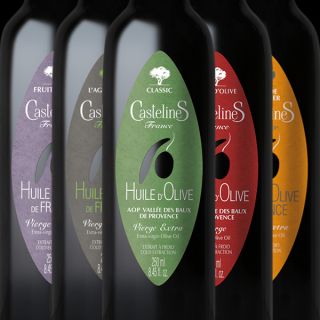How to read a label
The labelling of olive oils must observe very specific regulations. Each wording on the label gives information on the origin of the oil and how it was produced.
Appellation d’Origine Protégée
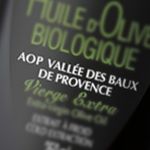
This wording guarantees the geographical provenance of the olive oil. It means that the oil was produced in the stated appellation area; that it meets precise characteristics defined by the Institut National des Appellations d'Origine (INAO); and that the olives were crushed at a mill in the appellation area.
EXTRA VIRGIN
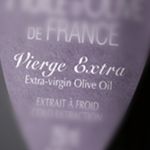
The wording "extra virgin olive oil" guarantees physicochemical and organoleptic properties. In physicochemical terms, the oil has acidity of less than 0.8 and a peroxide level below 20.
In organoleptic (sensory) terms, the oil is flawless - it is not rancid, vinous, musty, metallic, fermented, etc.
The term "extra virgin" is coupled with the wording "superior category olive oil obtained directly from olives and solely by mechanical means". This compulsory wording means that the oil is of extra virgin quality. Castelas olive oil is pure: no chemical or refining methods are used to produce it.
VIRGIN
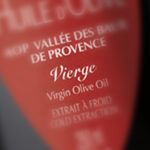
The wording "virgin olive oil" indicates acidity of between 0.8 and 2.
This term is coupled with the wording "olive oil obtained directly from olives and solely by mechanical means".
COLD EXTRACTION
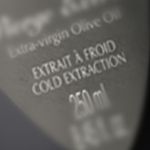
This wording guarantees that the olive oil was extracted at a temperature below 27°C and solely by mechanical means.
KEEP IN A COOL, DARK PLACE
Olive oil must be stored away from heat and light, and preferably for a maximum period of two years. Make sure that the bottle or can is properly closed, as olive oil tends to absorb ambient odours.
